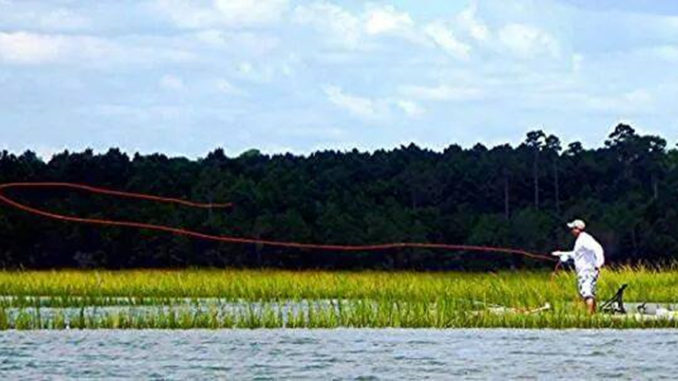
The outdoors community supports many subgroups. In the hunting world, we have bowhunters, those that primarily use black powder and primitive firearms, dog hunters and even those that only hunt certain types of animals such as waterfowl, big game or upland game.
The fishing world is no different.
This column is about those that target their various favorite species by use of a vessel powered or typically powered by paddle. Our sport has grown increasingly over the past decade as manufactures have designed kayaks, canoes, stand-up paddleboards and hybrids of each specifically for angling.
We are a niche market and group, but what happens when you combine niches?
Just as there are many fishermen who want to pursue their passion by use of sitting virtually on the water and powered by paddle or oar, there are many other niches where our brethren have remained constant in their pursuits as well.
Fly fishing is one of these niches. Just because one decides to try fishing from a kayak doesn’t mean he has to give up his preferred means of catching fish.
When you combine the means to get there with the technique of enticing the fish to bite, specialized skills and adapted equipment become the necessity. So what do you look for?
• Vessel. The means to get there is just as vital of a choice as the equipment. Daniel Seaman of Rocky Mount is a dedicated fly fisherman and kayak angler who has a large following for his expertly tied flies under the Bug Wild Fly Company logo.
Seaman (BugWildFlyCo@gmail.com) believes the kayak has to meet certain needs to have an enjoyable and successful fly fishing trip.
“I look for an open, non-cluttered cockpit area,” he said, explaining that the open area allows the fly line to remain free and untangled to allow ease of casting.
• Where to fly fish from the vessel. Fly fishing can take place in freshwater and saltwater and from both a sitting or standing position. The equipment and expertise needed depends on how you prefer to fish.
When fishing for sunfish such as bream and crappie, Seaman tends to mostly stand while fly fishing from a kayak.
“I look for stability for standing and casting,” he said.
Stability comes from both the kayak and the angler. More-stable kayaks have a greater width-to-length ratio. A kayak that is 36 inches wide is not necessarily more stable than one that is 33 inches wide, if the first one is 2 feet longer.
For ease of getting in position, a stand-up strap is quite handy. Many kayaks have them installed from the manufacturer, but they can be added easily.
Seaman also prefers a kayak that is easy to enter while in the water or near the shoreline, as he likes to wade-fish as well. This is hard to determine unless you have access to one by a friend or perhaps on a demo model in order to try out for yourself.
• Equipment. Notice I skipped the sitting position? We will discuss that here. Fly-fishing has a nice following in saltwater, and not always in the flats. Yes, both large, open lakes and sounds and seas can get rough, and you have to be prepared, but a saltwater fly fisherman encounters high waves on a regular basis. This does not go well with trying to stand.
Still, stability is a key ingredient for a safe and successful trip. But as far as equipment goes, the fly fisherman has to think a little differently
On the back cast, a short fly rod can cause the line and lure to strike the surface of the water, resulting in a bad or no cast. A high seat position — if you kayak allows multiple heights — with a longer fly rod helps in keeping the line from getting wet before you want it to. Long casts require a long rod.
With a kayak, canoe or SUP, you can work your way closer to the fish than you normally can with a boat. This helps keep the casting distance to a minimum, meaning you are very capable of getting the fly near the fish if you prefer a sit-down approach.
So, are you ready to try a different angle on angling?



Be the first to comment